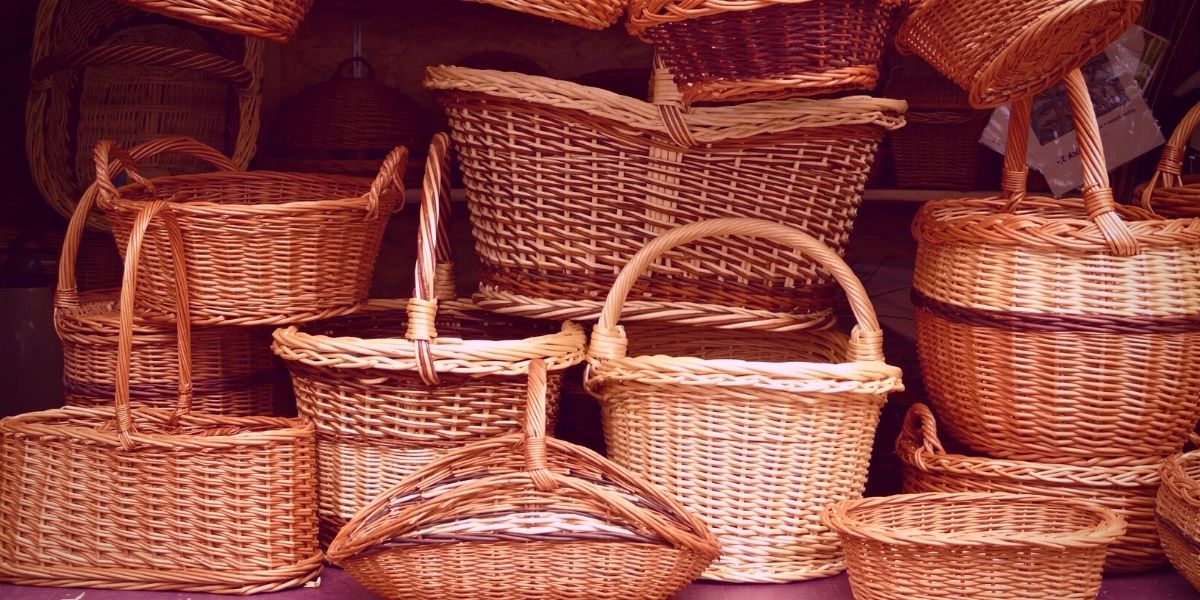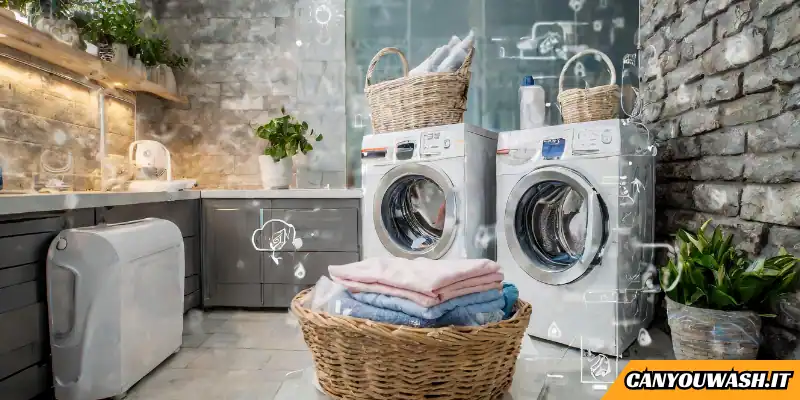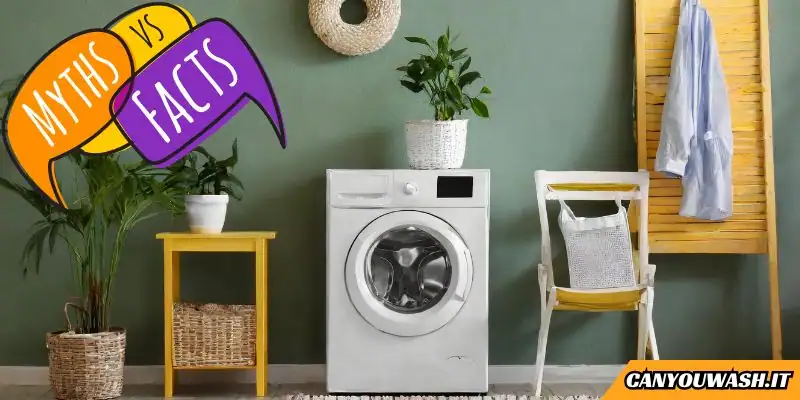Yes, you can wash a basket, depending on its material. The method of washing may vary depending on whether the basket is made of natural fibers like wicker or rattan, or if it is made of a synthetic material like plastic or metal.
Here’s a table listing different types of baskets and whether they can typically be washed:
| Basket Type | Washable? |
|---|---|
| Wicker | Yes |
| Rattan | Yes |
| Bamboo | Yes |
| Seagrass | Yes |
| Jute | Yes |
| Cotton | Yes (if it’s a washable cotton material) |
| Wire/Metal | Yes (avoid prolonged exposure to water to prevent rust) |
| Plastic | Yes |
| Fabric | Yes (check care instructions for specific fabric type) |
| Straw | Yes (check care instructions for specific type of straw) |
| Paper | No (paper baskets are not typically washable) |
| Leather | No (cleaning methods may vary; consult professional if needed) |
Please note that this table provides general guidelines, and there may be exceptions or specific care instructions for certain types of baskets. Always refer to the manufacturer’s recommendations or any specific care instructions provided with the basket to ensure you follow the appropriate cleaning method.
Dos and don’ts of washing baskets
Dos
- Do remove any loose debris or dust from the basket before washing.
- Do use a mild detergent or soap suitable for the basket’s material.
- Do use a soft cloth, sponge, or brush (if necessary) to clean the basket gently.
- Do pay attention to any stains or soiled areas and try to gently scrub them.
- Do rinse the basket thoroughly with clean water to remove any soap residue.
- Do dry the basket properly to prevent mold or damage. Use a towel to absorb excess water or allow it to air dry in a well-ventilated area.
- Do follow any specific care instructions provided by the manufacturer for the particular type of basket.
Don’ts
- Don’t soak the basket for an extended period, especially if it is made of natural fibers, as it can weaken the material.
- Don’t use harsh or abrasive cleaning agents that can damage or discolor the basket.
- Don’t expose the basket to direct sunlight or high heat sources during the drying process, as it can cause fading or warping.
- Don’t forcefully scrub or apply excessive pressure, especially on delicate or intricate parts of the basket.
- Don’t neglect to test a small, inconspicuous area of the basket with the cleaning solution before applying it to the entire basket, especially if it’s made of a sensitive or unique material.
5-step guide to washing a basket
Step 1
Prepare the Basket
Remove any loose debris or dust from the basket by gently brushing or shaking it. If there are any stubborn dirt or stains, you can use a soft brush or cloth to lightly scrub those areas.
Step 2
Create a Cleaning Solution
Fill a basin or sink with warm water and add a mild detergent or soap suitable for the basket’s material. Ensure that the detergent is well-dissolved in the water.
Step 3
Clean the Basket
Dip a soft cloth, sponge, or brush (depending on the basket’s material) into the soapy water. Gently clean the surface of the basket, including both the inside and outside. Pay particular attention to any stained or soiled areas and try to gently scrub them using a circular motion.
Step 4
Rinse Thoroughly
After cleaning, rinse the basket thoroughly with clean water to remove any soap residue. Make sure all traces of detergent are washed away. You can use your hands or a gentle stream of water for rinsing.
Step 5
Dry the Basket
Use a dry towel to absorb excess water from the basket. Pat the surface gently to remove moisture. Then, let the basket air dry completely in a well-ventilated area. Avoid exposing it to direct sunlight or high heat sources, as it can cause damage or fading to certain materials. Ensure the basket is fully dry before using or storing it.
FAQs
Can I use bleach or harsh cleaning agents to wash my basket?
It is generally not recommended to use bleach or harsh cleaning agents on baskets, especially if they are made of natural fibers or delicate materials. These strong chemicals can damage the basket’s appearance, color, and structural integrity. Stick to mild detergents or soaps suitable for the basket’s material.
How often should I wash my basket?
The frequency of washing a basket depends on its usage and level of dirt or stains. If the basket is visibly dirty or stained, it is a good indication that it needs cleaning. However, for baskets used for decorative purposes or light storage, occasional cleaning may be sufficient.
Can I submerge a basket made of natural fibers in water?
It is generally not recommended to submerge baskets made of natural fibers, such as wicker or rattan, in water for an extended period. Natural fibers can weaken when exposed to excessive moisture. Instead, use a damp cloth or sponge to clean the basket’s surface, avoiding prolonged exposure to water.
Can I use a dishwasher or washing machine to clean my basket?
Dishwashers and washing machines are generally not suitable for cleaning baskets, especially those made of natural fibers or delicate materials. The mechanical agitation and high temperatures in these machines can cause damage. Stick to handwashing methods using gentle techniques.
What should I do if my basket develops mold or mildew?
If you notice mold or mildew on your basket, it’s important to address it promptly. Mix equal parts of water and white vinegar or a mild bleach solution (1 part bleach to 10 parts water), and lightly scrub the affected areas using a soft brush or cloth. Rinse thoroughly and dry the basket completely to prevent further mold growth.
Final thoughts 💭
In summary, handwashing a basket involves removing loose debris, preparing a gentle cleaning solution, and using a soft cloth or sponge to clean the basket’s surface. Thorough rinsing and proper drying are essential to ensure no soap residue or moisture remains.
Avoid harsh chemicals, excessive water exposure for natural fiber baskets, and using dishwashers or washing machines. Promptly addressing mold or mildew with appropriate solutions is necessary. Adhering to manufacturer’s care instructions for specific materials will help maintain the basket’s quality and longevity.





Leave a Reply